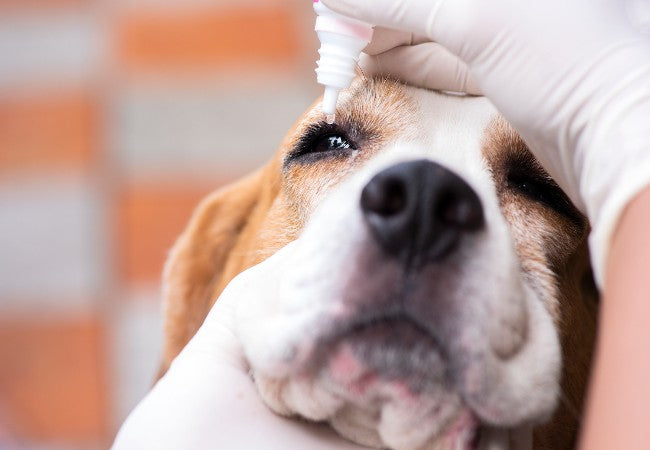Veterinary Guide to Keratoconjunctivitis Sicca in Dogs 2025 🐶👁️

In this article
Veterinary Guide to Keratoconjunctivitis Sicca in Dogs 2025 🐶👁️
By Dr. Duncan Houston BVSc
🔍 Introduction
Keratoconjunctivitis sicca (KCS), commonly called “dry eye,” is a chronic and potentially painful condition caused by inadequate tear production in dogs. Tears are essential for lubrication, nutrition, and protection of the cornea and conjunctiva. I'm Dr. Duncan Houston, BVSc, here to provide an in-depth look at KCS—covering causes, diagnosis, treatment, and prevention in 2025. 🩺✨
💧 What Is KCS?
KCS occurs when tear production or quality is insufficient. Tears have three layers: lipid (oil), aqueous (water), and mucin (mucus). Deficiency in any layer leads to dryness, inflammation, infection risk, and potential corneal damage.
Causes:
- Immune-mediated destruction of tear glands (most common)
- Neurogenic causes—e.g., nerve damage from injury or anesthesia
- Side effects of medications like sulfonamides or atropine
- Breed predisposition—Cocker Spaniels, Bulldogs, Shih‑Tzus, Lhasa Apsos, Cavaliers display a higher risk
- Reduced tear quality from gland or eyelid disorders
🩺 Symptoms You’ll Notice
- Thick, sticky discharge; eyelids may be red and swollen
- Squinting, blinking more, pawing or rubbing at the eyes
- Corneal cloudiness, ulceration, possible pigmentation or scarring
- Chronic eye infections or conjunctivitis unresponsive to antibiotics
🔬 Diagnosing KCS
- Schirmer Tear Test (STT): Measures tear production over 60 seconds. ≤15 mm/min suggests KCS.
- Tear film break-up time: Assesses tear film quality (break-up <20 s is abnormal).
- Fluorescein stain to detect corneal ulcers or damage
- Complete ocular exam for eyelid health and secondary infection
🛠 Treatment Options
1. Stimulate Natural Tear Production
- Ciclosporine (Optimmune® 0.2%): First-line immunomodulator; reduces inflammation and boosts tear production.
- Tacrolimus: Often used if cyclosporine is ineffective.
- Pilocarpine: Useful in neurogenic cases to stimulate glandular secretion.
2. Tear Replacement (Lacrimo-Mimetics)
- Artificial tears, gels, and ointments provide hydration and comfort.
- Apply 2–6 times daily, especially during early treatment.
3. Treat Infections & Inflammation
- Topical antibiotics for ulcerations or bacterial infection.
- Occasional steroids or NSAIDs for inflammation, under vet guidance
4. Surgical Options
- Parotid duct transposition: Reroutes saliva to the eye when medications fail.
- Considered last resort due to complexity and complications
📅 Management & Follow-Up
- STT reevaluation every 3–4 weeks until stable, then every 3–4 months.
- Most dogs show improvement within 6–12 weeks of proper therapy.
- Long-term or lifelong treatment: ceasing therapy can cause recurrence
🏥 Prognosis
With early and consistent treatment, many dogs regain comfortable vision. Mild to moderate cases have an excellent outcome (>80% recovery), while severe cases (STT < 2 mm/min) have fair outcomes (<50%).
🛡️ Prevention Strategies
- Prompt evaluation of eye redness or discharge
- Breed screening for predisposition (e.g., Cavaliers, Shih-Tzus)
- Careful use of medications like sulfonamides or atropine
- Protect eyes from trauma and irritants like dust or wind
🔧 Tools & Services Recommendations
- Ask A Vet App: 24/7 expert guidance for eye emergencies 📱
✅ Final Thoughts
KCS is common but manageable. Early diagnosis, consistent therapy, and regular follow-ups are the keys to maintaining your dog's eye health and comfort. For personalized care plans, rely on trusted platforms like AskAVet.com.
Download the Ask A Vet app today for real-time vet support, and let’s keep your furry friend’s vision clear and pain-free in 2025 and beyond! 🐕❤️






